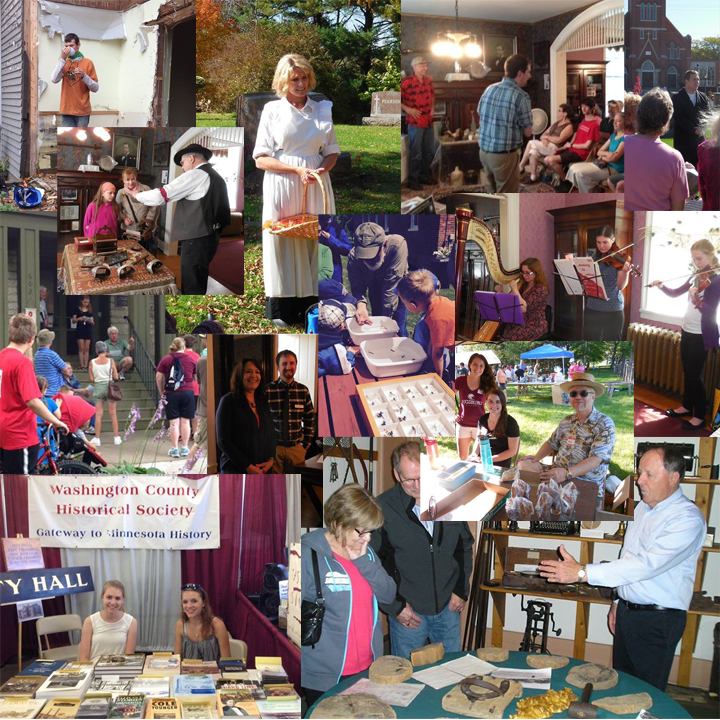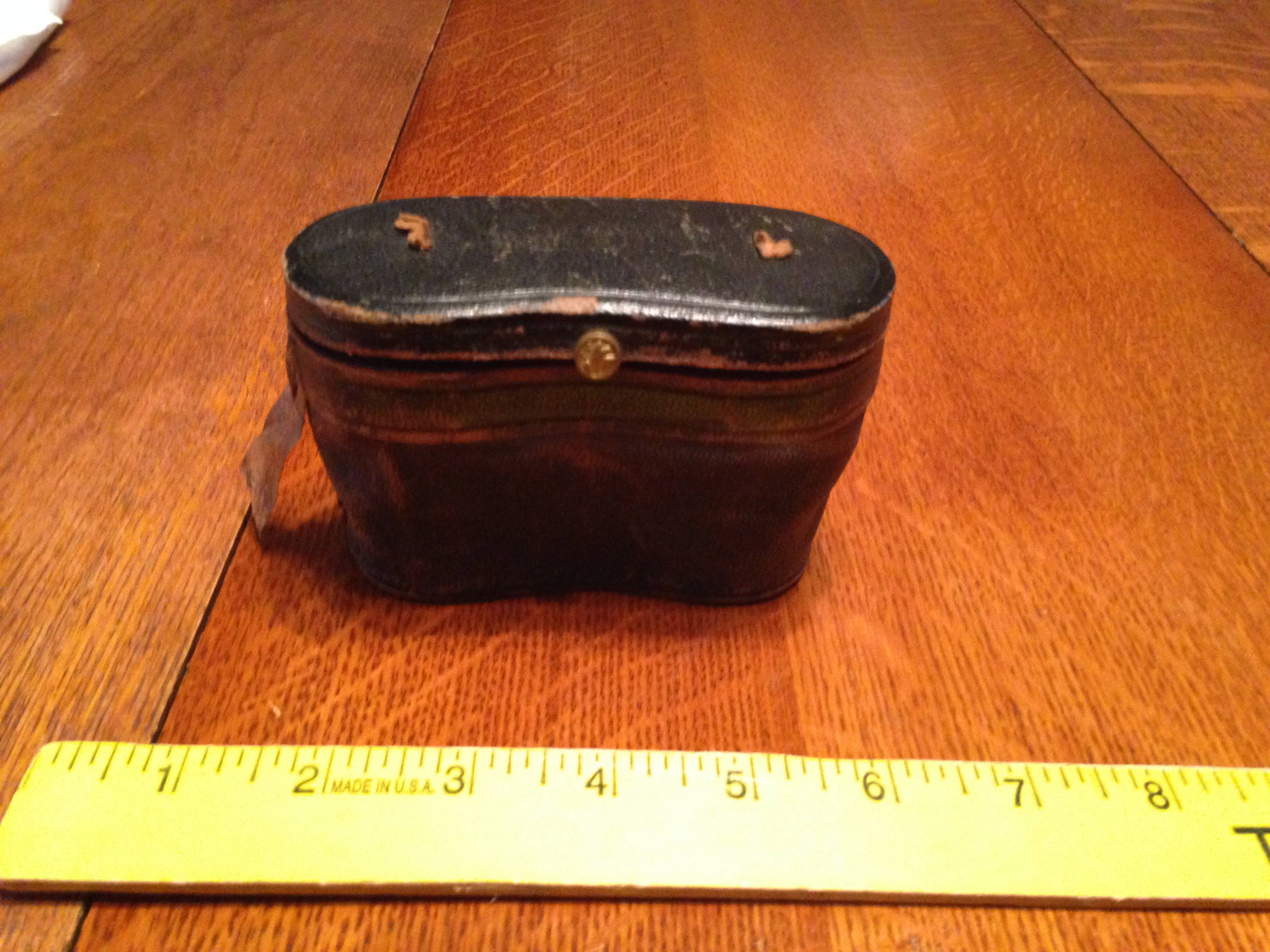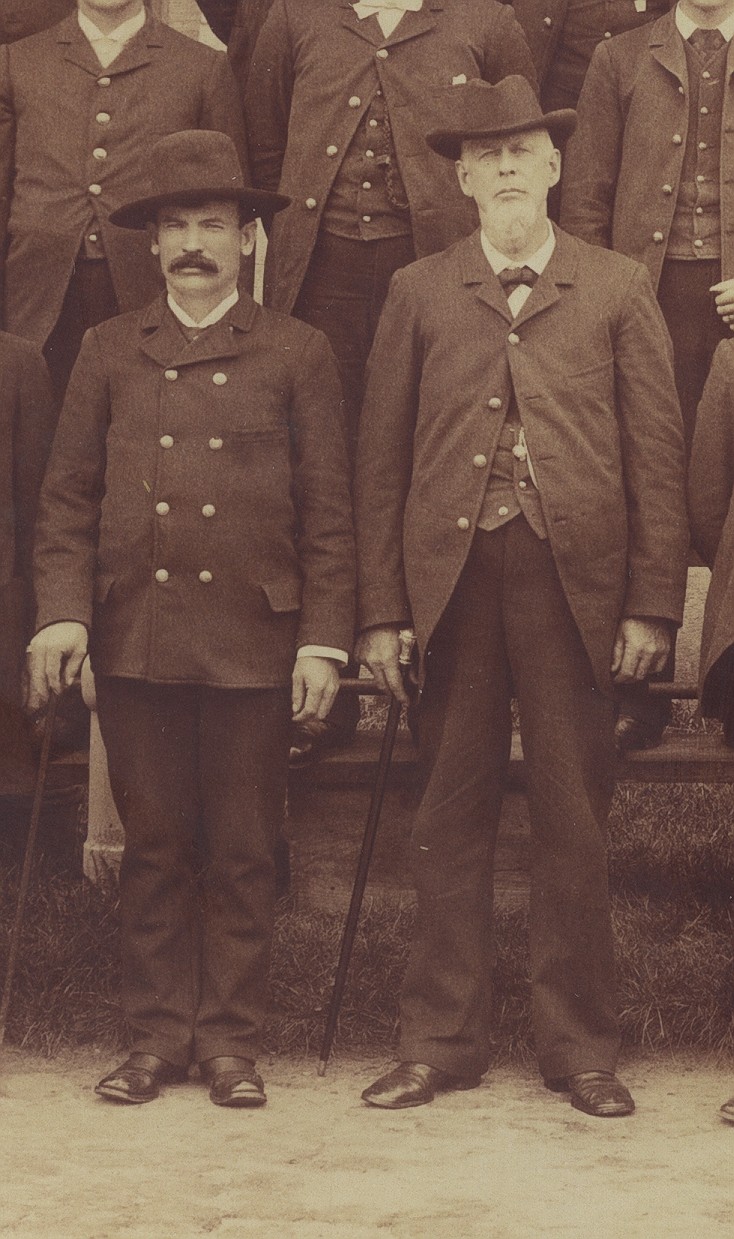This issue: Contents
Tuesday, December 29th, 2015
- Editor’s Note
- WCHS News: A Look Back at 2015
- WCHS News: Winter Ice Cream Social
- What Is This Thing?!
- Old News: Turn of the Century’s First World Problems
- Featured Article: From Boilermaker to Police Chief
Editor’s Note
Can you believe it…? It’s December 29th and the rest of the year has somehow ended up in our rearview mirror.
I swear these years seem to fly-by quicker and quicker!
WCHS had a heck of a busy 2015! Be sure to check out our first News Story to see just a few of the things we got up to this last year.
Of course we want to stay busy next year too! And we’ll be kicking the year off with everyone’s favorite winter activity – our Winter Ice Cream Social! Head down to our second News Story for all the details.
Take a look at our “What Is This Thing?!” section for this year’s final challenge!
In this week’s Old News, you’ll read about one newspaper editor’s fashion crusade.
Finally, we’ll wrap up today’s article by looking at the fruitful, yet short, life of John Glennon.
And on a personal note, thank you all for a wonderful 2015 here at WCHS. I wish each and every one of you a Happy New Years!
Want to learn more about the history of Washington County? “Like” WCHS on Facebook and follow us on Twitter!
Sean Pallas
Historical Messenger editor and Warden’s House Site Manager
spallas.wchs@gmail.com
WCHS News
Winter Ice Cream Social
Are you going to let a little bit of snow and freezing temperatures keep you indoors?! Of course not! We’re Minnesotans!
January is the perfect time for an Ice Cream Social!
Join WCHS on Saturday, January 16th from Noon – 4:00 PM for everyone’s favorite seasonally-inappropriate winter event!
With FREE ice cream from Leo’s Malt Shop, you won’t even notice those cold gusts of wind off the river! Don your warmest winter wear, grab your ice skates, and join us in helping continue this fun (but admittedly a bit silly) Stillwater tradition!
Coffee will also be provided & chili will be available for a nominal fee.
WCHS News
A Look Back at 2015
Whew, so here we are. 2015 is just about over.

Over the last year, we’ve hosted more than a dozen guest speakers, fundraiders, and other events. Both of our museums saw an increase in attendance over last year. We actually had an amazing 50% increase of admissions at the Hay Lake Museum and its associated events!
Not to mention that we managed to pay off the mortgage on the Greely Street building ahead of schedule and we stepped up and managed to prevent the historic Boutwell House from being demolished! The rebuilding and renovations of this wonderful historic home will actually begin tomorrow and you can look forward to learning more about our preservation efforts throughout the beginning of 2016!
But the fact of the matter is that nothing we did this year would be possible without the support of folks like you! (Yes, you! Whoever is reading this e-newsletter right now!) Thank you! Your assistance is appreciated (and needed!) more than you know!
If you are a member of WCHS, be sure to renew your membership for the 2016 year! And if you aren’t a member…what are you waiting for!?
Help us preserve and share our local history throughout 2016 and beyond!
WCHS Membership
What is This Thing?!

What Is This Thing?! (Round 24)
Last issue’s What Is This Thing?! might have been the hardest challenge yet! …in more ways than one!
This week’s artifacts are from the Stillwater Last Buddies’ Bully Beef Club. The club was organized in 1932 by 280 St. Croix Valley men who had all fought in World War I. Inspired by the similar “Last Man’s Club” of Civil War veterans, a bottle of cognac (the tip of the bottle is visible in the original photo) was donated to the Bully Beef Club by the Last Man of the Last Man’s Club – Charles Lockwood. Here’s a better photo of the bottle (you can see they actually didn’t drink it!)
The metal container is actually a very rusted can of corned beef. This type of beef was often used as rations for soldiers in both World Wars. This particular can was brought back from France by a member of the Bully Beef Club as a sort of memento and became the namesake of the club. If you look closely at the original photo, you can actually even see the petrified beef inside the can through the rust holes! A very cool and unqiue item we are fortunate enough to have in the Society’s collection!
Onto this week’s challenge!
Can you identify the WCHS artifact photographed above? Can you guess its use? If you’d care to venture an answer, you can send an email to me at spallas.wchs@gmail.com, tweet @WCHSMN, or post your guess on our Facebook page.
Good luck!
Full Image
Different Angle
Old News
Turn of the Century’s First World Problems
The following article was actually re-printed in the Stillwater Messenger from a contemporary London journal. Now usually I’ll try to select an article that focuses on local concerns for the “Old News” section, but I couldn’t pass this article up for a few reasons.
Firstly, whenever I see photographs from around this period, I always think about how uncomfortable everyone must have been. I can’t imagine wearing a wool jacket in the middle of August worn over a high collared button-up shirt. It’s very interesting to hear someone who would have been wearing these types of clothes comment on the fashion of the times.
Secondly, I’m fascinated by how much space the Messenger editors allowed for this opinion piece. This article is easily the longest on the page. The depth of the arguments (comfort, health, even touching on the theory of evolution) are equally interesting.
Finally, I couldn’t resist this article, because without a shred of irony, this drawing is in featured in the exact same issue of the Stillwater Messenger a few pages before this editorial. Yes, I’m sure wearing linen undershirts in summer was uncomfortable…but compared to the clothes women were expected to wear in the same temperature…?
Male Dress Reform – Stillwater Messenger – December 29, 1906
The necessity by which men feel coerced of proving to the world that they wear white shirts lies at the basis of all the difficulties of the dress problem. Until the garment becomes extinct it is hopeless to attempt the reform of men’s dress on the lines of health and comfort.
It will of course ultimately disappear, for it is but the mark of a stage in the evolution of dress, just as the vermiform appendix is a useless evolutionary remnant in the body. But the question is whether we ought to await the slow course of evolution or to use our common sense and abandon the ancient garment at once.
Why do we wear white shirts? Ages ago it was only the wealthy who could afford to clothe themselves in linen. The possession of linen underwear was then a mark of social position, and there was an obvious advantage in making public display of it.
We may not put down three-fourths of the discomfort of the hot summer to the account of the starched shirt. It prevents the very process devised by nature to keep the body cool – the evaporation of sweat. In so far as it hinders this natural process in summer, the white shirt favors disease. But in winter it is a fruitful cause of illness.
In winter the mere wearing of a white shirt would no doubt leave a man no better and no worse if he were content to wear it for his own satisfaction. But the curious law of evolution comes in and compels him to wear it in such a way as to do himself physical injury.
Wherever evolution is at work it leaves vestiges – literally, footprints. Probably it is millions of years since the vermiform appendix became a useless organ, but it still survives. All evolutionary survivals appear to be harmful. The appendix is the seat of appendicitis. In the inner corner of the eye there is the remnant of a once useful third lid, which now only lodges dust and causes irritation.
The lord chancellor’s wig was once a comfort in ancient drafty legislative chambers and now merely serves to make a sensible man look ridiculous and give him a headache.
People who drew up laws were long ago paid according to the number of words, but the multiplicity of words now only causes confusion. So the white shirt that was once a badge of wealth and culture, being no longer value for that purpose, is only a cause of discomfort and disease.
It is necessary to cut a piece out of the vest and the coat, just over the most important organs of the body, in order to prove to our neighbors that we wear white shirts. Consequently in the winter time we expose the lungs and the air passages to the cold wind and the cold rain.
From the point of view of health nothing could be more stupid. Bronchitis is one of the most deadly of all disease in this country. Bronchitis is simply inflammation of the bronchial tubes. This inflammation is excited by a chill, a chilling of that part of the body left exposed in order to show that we wear white shirts.
The white shirt, in fact, might appear in the tables of the registrar general as the cause of so many deaths, perhaps 100,000 a year.
And does it really improve a man’s appearance? By virtue of the association of ideas it certainly does. Usually men who do not wear white shirts are not given to cleanliness. The man who wears a white shirt washes his face and hands and brushes his cloths; hence when we see a white front and white cuffs we experience that pleasant sensation produced by general neatness of the person and clothing. But that a few square inches of white clothing over the chest makes a man look better is an absurd conclusion.
The case for the white shirt has not a leg to stand upon. The garment is uncomfortable, unhealthy, and unbecoming. And as it has lost the only useful function it ever possess – that is, its symbolism of exceptional wealth – we ought to discard it altogether. The difficulties of this course are very great no doubt. What we want is an “antiwhite shirt society,” which would agree to wear, from some prearranged date, a dress designed wholly with regard for comfort, health and beauty.
Featured Article
From Boilermaker to Police Chief
by Brent Peterson, WCHS Executive Director
No one knows exactly where their career path will take them. How many of us actually are using our college majors in their day-to-day life?
Let’s take a moment to examine the life of a young boilermaker, who went through some career changes, but those changes seemed to suit him. His name was John S. Glennon. 
Glennon was born at Dubuque, Iowa on December 23, 1860. At an early age he and his family moved to Chicago, where he received his education. Glennon learned the trade of steam boilermaker and came to Stillwater in 1882. He found work as a boilermaker with the Minnesota Thresher Manufacturing Company at the prison on the north end of Main Street. He worked at that position until 1885, when he was promoted to the traveling expert machinist and boilermaker for the company.
In 1888, Mayor George Seymour appointed Glennon as a policeman in the city of Stillwater, but resigned the position after serving one year. He was then elected by the city council to the position of Street Commissioner. He resigned this post in 1890, to accept an appointment by Warden John J. Randall to the position of Assistant Deputy Warden. Glennon served in that capacity until February 1, 1897. [Photo: Deputy Warden Glennon (left), Warden Randall (right)]
In 1891, while acting in the capacity of Assistant Deputy Warden, Glennon found himself a part of a State Legislature investigation of the cruel, brutal and inhuman treatment of prisoners. Two convicts who accused not only Glennon, but also other guards with cruel treatment brought this on. The committee appointed to look into the matter exonerated every guard and deputy warden named. However, this did lead to the resignation of Warden Albert Garvin.
On April 14, 1897, Mayor A.W. Pattee appointed John Glennon to the position of Chief of Police of Stillwater. At that time, the police force comprised of the Chief, one Captain, and nine patrolmen. This was small compared to other cities the same size of Stillwater.
In 1898, Glennon resigned the position of Police Chief, left Stillwater behind him and travelled to the alleged gold fields of Alaska to strike it rich. However, the expedition proved fruitless; there was no gold to be found. Glennon returned to prison work in Anamosa, Iowa.
When Warden Henry Wolfer again took over control of the Minnesota Prison in Stillwater, he sent for Glennon and made him the Deputy Warden, a position he would keep until his death.
Deputy Warden Glennon performed his duties fully, however, about 1905, his health began to fail. There was several times that his family and friends thought that recovery was on the way, but on the morning of December 26, 1906, only 3 days after his 46th birthday, John S. Glennon died in his home, the cause of death being pernicious anemia. Mr. Glennon left a wife and four children behind.




